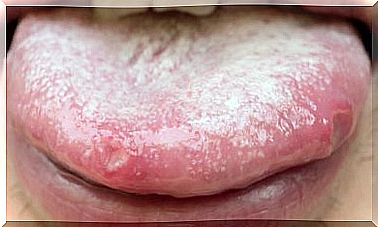Intermittent Fasting Helps Reduce Inflammation
Intermittent fasting has become popular as a strategy that helps reduce inflammation. Statements like 16/8, Eat Stop Ea t , diet 5: 2 , Fasting Diet Mimicking, among others, are increasingly popular, but not everyone knows what they refer.
Well, far from being miraculous or similar practices, they are different ways of doing this type of fasting. In recent years it has become a trend in the world of nutrition, since there is evidence that speaks of its effects when it comes to improving health.
In particular, reducing your caloric intake for a day, for a certain period, contributes to weight loss. In turn, this brings with it other benefits at the metabolic and physical level, as it favors the control of inflammatory processes. What does science say about it?
What is intermittent fasting?
Intermittent fasting is a form of caloric deprivation or restriction for a certain period of time. While the limitation lasts, the intake is restricted to liquids such as water, herbal teas, clear broths or black coffee.
Reduced caloric intake can also be made with respect to the usual energy needs of each person. Although there is a lot of talk about it now, it is a common practice at night. Muslims even do it once a year in Ramadan.
There are different methods of fasting. Each person can adopt the strategy that best fits their lifestyle or the one that they can exercise more bearable.
If it is implemented in the correct way, it does not have to appear any discomfort, feeling of hunger, lack of energy or loss of muscle mass. Among the most practiced and studied are the following modalities:
- Time-restricted eating: it is based on the daily limitation of the period within which you can eat without reducing your total caloric intake. This usually ranges between 4 and 8 hours, which means that the fast lasts between 12 and 20 hours.
- Fasting mimicking diets or diets that mimic fasting: in this case, food is greatly reduced for 4 or 5 days a month. In addition, the amount of fats, proteins and carbohydrates is also modified.
- Alternate-day fasting : this system is one of the most studied. Days of normal eating, without energy restrictions, are combined with days of very low intake (around 500 calories).
- The Eat-Stop-Eat method : consists of doing a complete fast two days a week. It is important that these are not consecutive.

Intermittent fasting and inflammation
Practicing periods of calorie restriction has some short- and long-term health benefits. Some of them are related to the inflammatory state, in addition to promoting a better quality of life and greater longevity.
Many of the benefits are known from animal studies. In people we still speak of few investigations, although they have begun to be developed and there is even some systematic review.
Caloric restriction is known to improve inflammatory and autoimmune diseases. Although the mechanisms have not been fully explained, there is a reduction in the number of monocytes (cells that cause inflammation) in the blood and in their activity. In turn, this reduction is due to a lower presence of glucose and protein from the diet.
In humans, a state of chronic inflammation would trigger the appearance of numerous diseases. In an article published in the scientific journal EMBO Reports , various authors agree that it can initiate the formation and proliferation of different tumors.
In the same way, a restoration to the inflammatory state can help improve other health problems, such as rheumatoid arthritis, asthma and cardiovascular diseases.
The inflammatory state and diet
When we talk about fasting, we are focusing on the time and the interval of hours during which it is possible to eat. Initially, there are no specific dietary restrictions in terms of quality or quantity of food.
However, to obtain a better result and an evolution in the state of health, it is necessary that the intake is based on fresh products, which provide proteins, fats and carbohydrates from healthy sources. Most studies reveal that the composition of the diet has an effect on some indicators of inflammation.
Due to the possible relationship between the inflammatory state and the appearance of neurodegenerative diseases and metabolic disorders, it is essential to improve the quality of the diet. We can achieve this by including the following foods on a daily basis:
- Fruits, vegetables and whole grains rich in fiber.
- Proteins from fish and lean meat.
- Healthy fats, such as olive oil, seeds, or nuts.
In contrast, dietary patterns high in saturated fat and refined grains are poor in fiber and natural antioxidants. Therefore, they can cause an inflammatory reaction. Thus, diet and inflammation experts are clearly betting on the Mediterranean diet or similar eating styles.

Risks and restrictions of intermittent fasting
As we have seen, intermittent fasting helps reduce inflammation, while also presenting other benefits for the body. In particular, it is associated with the following:
- It enhances autophagy and therefore helps prevent aging.
- Lowers triglycerides and improves blood lipid profile.
- It favors insulin sensitivity and improves all cases of resistance to the action of this hormone.
- Supports weight loss diets. In addition, it no longer produces a feeling of hunger and allows you to preserve muscle mass.
However, it is not always suitable for everyone. In the case of women, it is not an appropriate practice during breastfeeding and in pregnancy. And it will be necessary to pay attention and stop fasting before any change in menstruation.
Nor should people who have suffered eating disorders or who are very underweight adopt it as a dietary pattern. In any case, it will be necessary to consult a health professional, as in case of having any illness.
Intermittent fasting helps reduce inflammation
Scientific studies aimed at investigating the consequences of fasting in humans are growing. Some corroborate that doing periods of caloric restriction can have the same positive effects observed in animals, that is, an improvement in the incidence and control of some chronic non-communicable diseases.
However, it is a recent field of research and more controlled clinical trials are needed to corroborate these results. Only then, in the future, can clear and safe recommendations be made to the general population.







